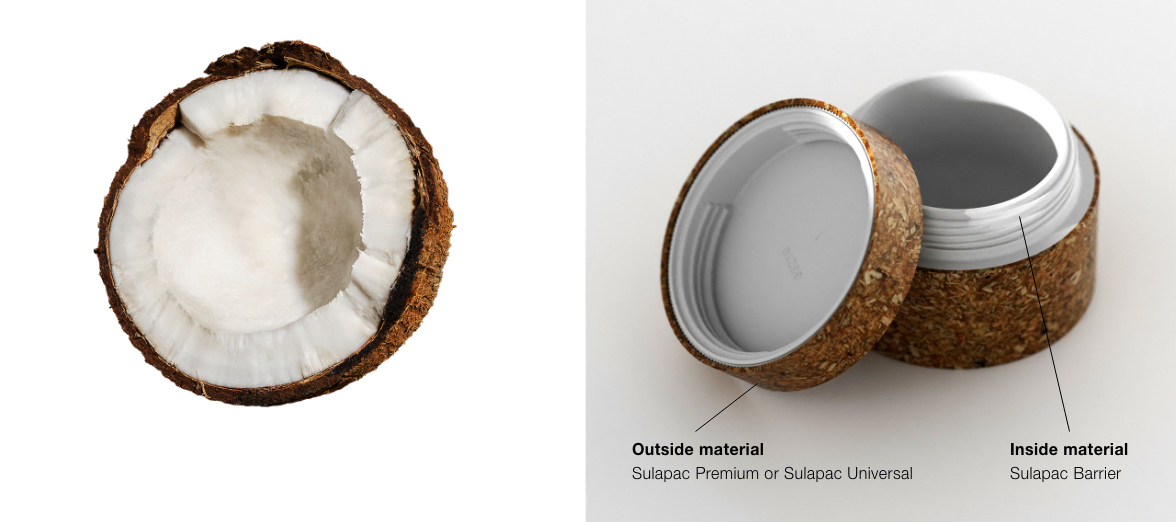The new standard for barriers – no persistent microplastics
Sulapac’s innovation is perfect fit for cosmetic brands after a sustainable solution for water-based formulas. Sulapac Barrier sets a new standard when comparing biodegradable materials to conventional plastics: Cosmetic packaging acceptable weight loss for emulsions is typically less than 3%. Sulapac barrier is clearly below this requirement.
< 3% |
Acceptable weight loss for emulsions |
1,3% |
Sulapac weight loss |
Tested with Sulapac 4-part jar with water (1.5%) and emulsion (1.3%) in 40 degrees Celsius for 12 weeks, which equals one year shelf-life.
Sulapac Barrier |
Conventional plastic (PP) |
|
Water barrier (WVTR) |
0,01 |
0,01 |
Oxygen barrier (OTR) |
2,3 |
35-377* |
WVTR g/(m2*24h), OTR cm3/(m2*24h), *Based on literature
Technical key features
Nature knows best. That’s why we design Sulapac materials to mimic the beauty, functionality and circularity of nature.
1 To facilitate the manufacturing, minimum amounts of manufacturing aids, which may contain non-renewable biodegradable polymers, are added, slightly decreasing the overall biobased % to >98%
2 Biodegradation of 91% in 56 days in the marine environment (ASTM D6691).
Technical solution – 2K or 4-part
Now you can have our premium material on the outside and barrier on the inside. Recommended maximum thickness for the inner layer is 2mm and for threads minimum thickness is 1mm. Needs 2K injection (also known as bi-injection) or 4-part mold.

Not leaving microplastics behind
Our patent pending material has been designed to mimic the nature without compromising usability or aesthetics. If for some reason Sulapac ends up in nature, it biodegrades into water, CO2 and biomass, without leaving permanent microplastics behind.1 It must be noted that littering is never ok. The ideal way to recycle Sulapac is via industrial composting.2
1)Biodegradation of >90% after 56 days in the marine environment (30C / 86 oF) (ASTM D6691). Biodegradation of 70% after 21 days in soil (ASTM D5988). Tested according to ASTM D5511 (99 oF) which simulates a solid-state anaerobic condition and represents an accelerated biodegradation in a landfill. 2)Always check your local recycling instructions.
How to purchase?
Ready-made packaging is available from our selected partners worldwide. Our experts are also happy to support you in switching to Sulapac material when using it with your converter.